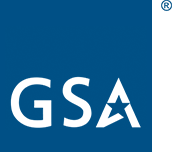Distributed
Before you do anything, read our best practices for making distributed teams work.
How do I...
Set up my computer?
TTS employees receive either a MacBook or PC and either an iPhone or Android from GSA, though you may not receive your work phone on your first day.
On your first day at work you should configure things so that your two-factor authentication (2FA) codes are delivered to your cell phone. If you don't receive your work cell phone on day one, you'll need to use your personal phone. If you do not configure 2FA you will not be able to access your email from outside of federal buildings.
See the Equipment page for more about how to set up 2FA so you can receive GSA 2FA codes on your cell phone.
Get a one-time password?
To get a one time password (OTP, required for logging in to some systems), you can either:
- Setup a TTS-only, SecureAuth OTP Application.
- Visit otp.gsa.gov.
Visit another GSA building?
Your badge should work in other GSA buildings. , external,TTS-only, Kathryn Connolly can submit paperwork to get permission for you to enter the NYC, Chicago, or D.C. buildings, which will take a few days. After you receive an email confirmation, visit the security office in that new building to activate your card.
Connect to the GSA network remotely?
See Logging in & Networks for details.
Tether to my GSA phone?
Apple's instructions , external,are here.
What supplies do distributed employees receive?
GSA provides remote workers with a laptop and phone but does not provide desk chairs or office products. GSA IT can provide you with a remote kit, including a monitor, keyboard, mouse, headset and hub to provide additional connectivity. You are able to choose which items best fit your needs. Printers are available as well but require additional justification
What advice do your distributed colleagues have?
From Peter Karman and Becky Sweger:
- Invest in a decent set of headphones with a microphone. It's often painful to have meetings with folks who rely on their laptop mics for audio: There are echoes, it's hard to hear, etc. Please try not to do that! Instead, get the kind that can plug into a laptop and your phone. These are an invaluable tool for long conference calls. Sennheiser's HD 219 headphones have worked for some of us.
- GSA can also provide a wireless keyboard and a mouse. If you're in need of extra equipment, just ask. Hop into , external,TTS-only, #equipment on Slack.
- A standing desk is critical for your health. Folks in the , external,TTS-only, #distributed channel are always happy to discuss their various standing desk hacks or purchases.
- Make sure you can connect to the GSA network remotely.
- Assume people are working asynchronously. We never assume that people are available the minute that we need them. We use the collaborative tools to communicate, which ensures all of our communication is documented and searchable for coworkers who might be checking on things later in the day. Writing everything down — even conversations we have verbally — ensures all team members are informed and up-to-date.
Keeping in touch
- Over communicate. Working remote means you can't rely on your physical presence to communicate to everyone else whether or not you're "at work." For 18F team members, use the , external,18F Out of Office (OOO) calendar if you're assigned to an office and working remotely or if you're working in a different place than usual. On phone calls, don't be afraid to jump in and tell people if you can't hear.
- Schedule (virtual) coffee with other TTSers. People who work out of GSA offices will do this from time to time, and you should, too. Ask people out to virtual coffee/tea and get to know each other!
Work-life balance
- Know when enough is enough. When you've done a good day's work, stop working! (advice from Michelle Hertzfeld)
- Remember to set yourself as inactive on Slack and turn off Slack's phone notifications. Setting yourself as inactive doesn't automatically stop the phone notifications, but doing both of these things will suppress notifications when you're not working.
- Set boundaries early and often. Remember that you can set your working hours in Google Calendar.
From Julia Solórzano:
MEET EVERYONE! The TTS team is filled with amazingly kind and talented people. Don't be shy, and get to know everyone! Learn about what projects are going on, see what interests you, and go for it."
Schedule virtual teas with your colleagues via Google Hangout, just to say hello. "You can also Hangout with colleagues and work on projects — sometimes it's just nice to see or hear someone," she says.
From Greg Boone:
Stay active! Ride a bike or go for a walk every day. I try to hit the trails for about 40 minutes over lunch. It cuts into my sit-down-and-eat lunchtime but it's worth it to get away from my desk and refresh my view.
Get or convert an existing piece of furniture into a stand up desk. Even if you don't use it all day, every day, having an alternative work surface can be really refreshing. Also, if you have a newish iMac at home, you can use the Thunderbolt port to turn it into a second monitor.
- Finally, make sure you get out and see other humans every once in awhile. It can be easy to feel like you're getting social interaction hanging out on Slack all day, but actually seeing humans who don't live in your house is also necessary.

